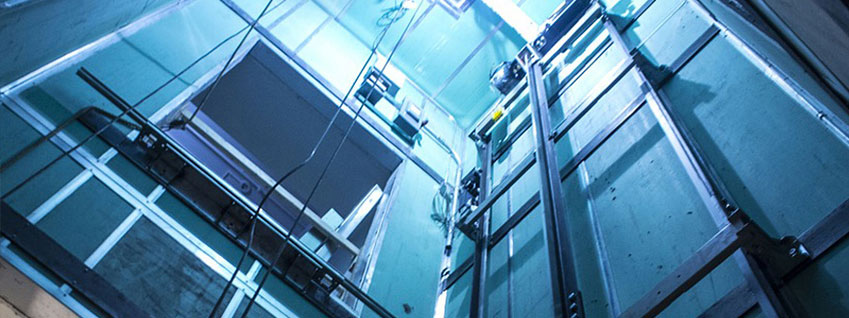Discover the very best Disabled Platform Lifts Prices UK for Residential and Commercial Use
Discover the very best Disabled Platform Lifts Prices UK for Residential and Commercial Use
Blog Article
Exploring the Globe of Elevators: Usual Concerns Encountered by Numerous Lift Devices
As we browse through the vertical transportation systems of modern structures, elevators stand out as an important element of our day-to-day lives. From hydraulic lifts to traction systems and machine-room-less designs, each lift kind comes with its set of typical concerns.
Hydraulic Lifts
Hydraulic lifts, typically preferred for low-rise buildings, make use of fluid stress to control the movement of the lift automobile (lift repair companies). This system involves a hydraulic pump pushing oil into a cylinder, creating the lift to relocate in the preferred instructions. While hydraulic elevators are known for their smooth and silent operation, they do come with their very own collection of usual issues
One widespread trouble with hydraulic lifts is oil leakage. The seals in the hydraulic system can use out with time, bring about oil seepage. This not just produces a mess but can additionally affect the elevator's efficiency if left unaddressed. In addition, issues with the control system, such as malfunctioning valves or a malfunctioning pump, can cause disturbances in the lift's motion.
Routine maintenance and prompt repairs are necessary to make certain the smooth performance of hydraulic elevators. By resolving these common problems proactively, structure owners can minimize downtime and make sure the security and effectiveness of their vertical transportation system.
Traction Elevators
When taking into consideration upright transportation systems in buildings, another typical kind besides hydraulic lifts is the grip lift. Traction elevators operate using a system of ropes and weights that move the elevator vehicle by grasping onto the hoist ropes. This device enables smoother and quicker upright transportation compared to hydraulic systems.
One of the common issues encountered by grip lifts is rope wear. The consistent activity of the ropes within the traction system can result in tear and use over time, potentially triggering the elevator to breakdown or come to be unsafe for use. Regular evaluations and upkeep of the ropes are vital to guarantee the elevator's appropriate performance and safety.
An additional issue that grip elevators may experience is associated to the control system. Problems with the control system can cause issues such as unpredictable movement, hold-ups in reaction times, or perhaps total shutdowns. Regular screening and upkeep of the control system are important to avoid such problems and guarantee the lift's dependability.
Machine-Room-Less (MRL) Elevators

Among the key components of MRL lifts is the small gearless grip maker that is set up within the hoistway. This device successfully drives the elevator automobile without the need for large equipment discovered in conventional traction lifts. Furthermore, MRL lifts normally use a counterweight system to stabilize the cars and truck, more boosting their energy performance.
Despite their advantages, MRL lifts may encounter difficulties connected to repair and maintenance as a result of the restricted space for equipment setup. Ease of access for servicing components within the shaft can be limited, requiring specialized training for service technicians. Appropriate upkeep timetables and regular inspections are crucial to make sure the ongoing smooth operation of MRL lifts.
Overloading and Weight Restriction Issues
Overloading and weight limit problems are important issues in lift procedures. Lift manufacturers style lifts with details weight capabilities to make certain guest safety and tools longevity.
When lifts are overloaded, it places too much strain on the electric motor, wires, and various other components, possibly creating malfunctions or failures. If they identify excess weight, security devices such as sensors and overload sensing units are in area to prevent elevators from relocating. Additionally, surpassing weight restrictions can result in enhanced energy consumption and deterioration on the lift system.
To reduce straining issues, developing managers need to prominently show weight restrictions in elevators and inform my explanation owners on the value of adhering to these restrictions - lift repair companies. Routine maintenance checks by certified specialists can also aid make sure that elevators are running within risk-free weight parameters. By addressing overloading and weight limit problems proactively, building proprietors can boost elevator safety and efficiency
Electric System Failures
Surpassing weight restrictions in lifts can not only lead to this content mechanical issues yet additionally potentially contribute to electric system failings within the lift framework. Electric system failures are a critical concern in elevator operation, as they can trigger unforeseen closures, malfunctions, or even safety risks.
Furthermore, power rises or variations in the electric supply can additionally disrupt the elevator's procedure, affecting its efficiency and safety. These electric disruptions can harm delicate elevator elements such as control panels, circuit boards, or sensors, resulting in system failures. Normal upkeep and inspections are essential to determine and resolve prospective electrical problems without delay, guaranteeing the effective and secure procedure of lift systems. By sticking to weight limitations and conducting routine electrical system checks, structure proprietors can reduce the risk of electrical failures in elevators.
Verdict
Hydraulic elevators, often favored for low-rise buildings, make use of fluid pressure to manage the movement of the elevator auto.When thinking about vertical transportation systems in structures, another typical kind aside from hydraulic lifts is the traction elevator. Traction lifts operate utilizing a system of ropes and counterweights that move the lift auto by grasping onto the hoist ropes. Unlike typical elevators that need a separate equipment space to house the tools, MRL elevators integrate many of the components within the shaft, getting rid of the demand for a specialized equipment room.In final thought, lifts deal with typical problems such as hydraulic malfunctions, grip system failings, and electrical system problems.
Report this page